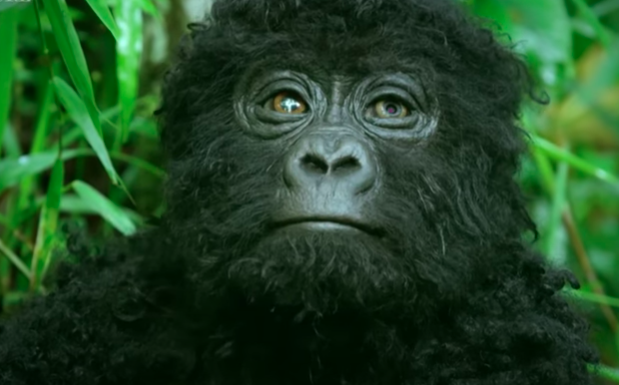A life-like robot designed to look and act like a baby monkey captures rare footage of a pack of Silverback Mountain gorillas in Uganda's Bwindi Impenetrable National Park humming in appreciation for their dinner. After finishing their meal, the video also revealed how gassy gorillas became after eating as clear evidence of flatulence could be heard in the video.
The video is a segment of the PBS series 'Nature: Spy in the Wild 2,' which trails animals in their natural habit using robotic look-alikes of the animal in focus.
The team designed the animatronic machine capable of realistic eye movements since wild gorillas are known to communicate with each other through eye contact. They also devised the 'spy gorilla' to portray a submissive disposition with the hopes that the pack would warmly welcome it.
Matt Gordon, one of the show's producers, said that the process of building the robotic spies is intricate and varied depending on what animal and behavior they were trying to film.
Gordon said the team didn't choose to construct an adult gorilla spy since the pack might see it as a threat. For this reason, they went with a baby gorilla instead. They formed the robot in such a way that the pack might accept it.
It was designed to be able to move and close its eyes as well as beat its chest, according to Gordon. He adds that they focused on the features of the baby monkey's eyes was because mountain gorillas learn a lot from each other by staring into each other's eyes.
The young gorilla robot was capable of averting his gaze when needed, to show respect to the real gorillas, as real young gorillas would do.
The team was also able to capture a rare moment of a baby gorilla running up to the robot and comically beating its chest. Such behavior would have been hard to observe using traditional methods, Gordon said.
In addition to catching the gorillas singing while eating, the footage also witnessed the gorillas passing gas after finishing their meal.
Also Read: Oncology Breakthrough: Researchers Unveil New Blood Test Cancer Screening Before Symptoms Appear
Why Do Gorillas Sing?
Clearly, humans aren't the only ones who can sing and hum. It has been known since 2016 that gorillas do it too. According to a study published in the journal PLOS ONE, gorillas have been found singing and humming while feasting om their food.
The evidence was taken using recorders. The recording revealed that males tended to sing most when they were enjoying flowers, seeds, and aquatic plants. These were considered to be their favorite foods.
According to the authors of the study, the evidence that specific foods brought out more calling may signify that the gorilla's attitude toward the food source plays a role in the production of food-associated calling in gorillas.
This also suggests that male gorillas are just reassuring other members of the pack that they are happy with the food they have found.
While vocal calls aren't something new among certain mammals and birds, this research was the first to strengthen what had previously only been anecdotal evidence.
* This is a contributed article and this content does not necessarily represent the views of sciencetimes.com















